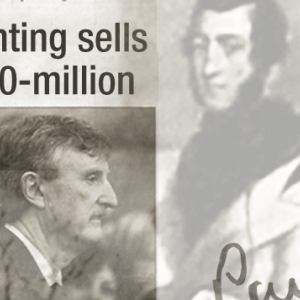Born in Calgary in 1906, Maxwell Bates began painting at an early age, and as a young man he quickly rejected the academic art tradition that dominated the city at the time. In 1931 he made the decision to leave Calgary for England, where he found commercial success as an artist before the war.
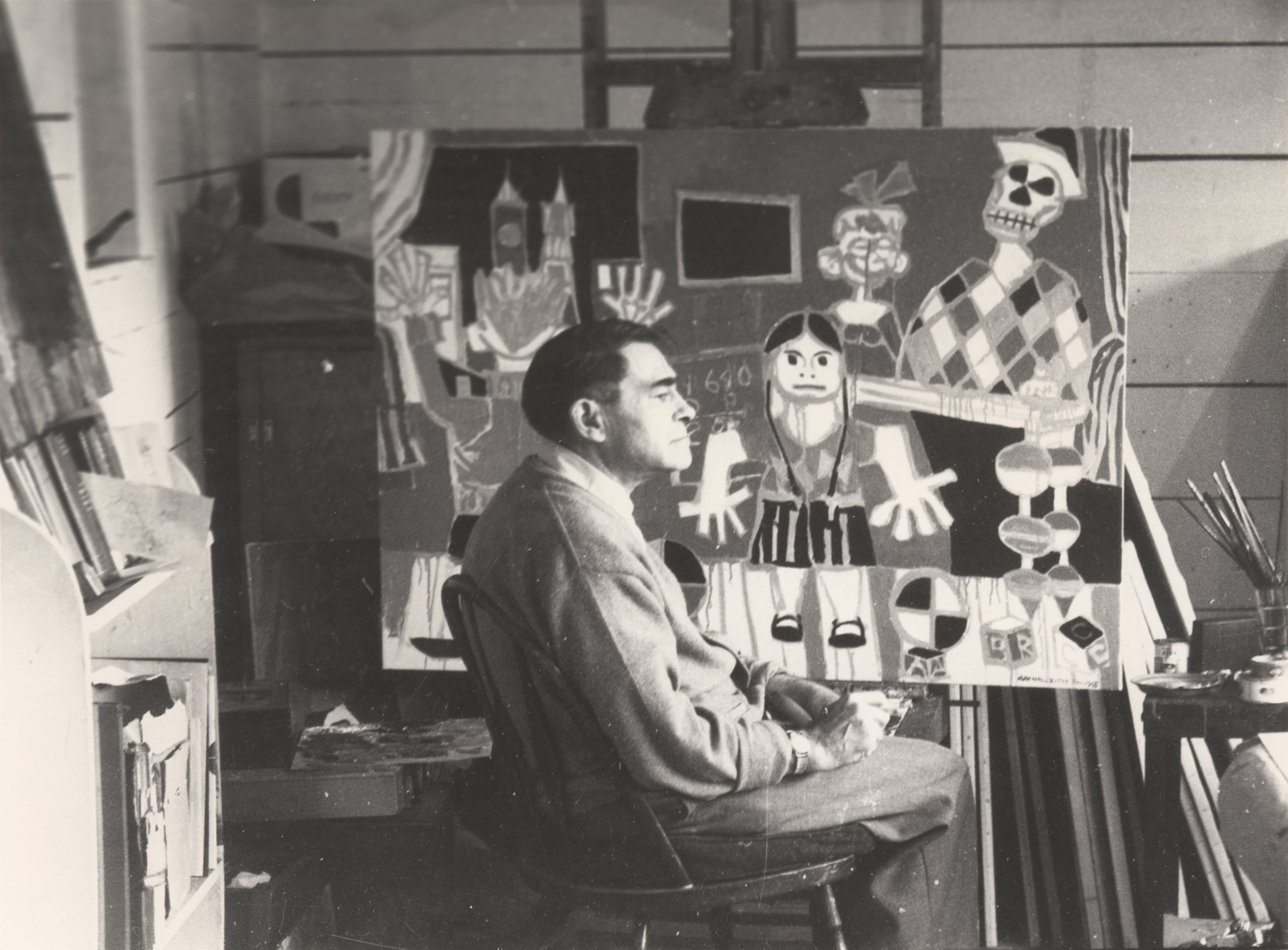
Photo courtesy Karl Spreitz Collection at the University of Victoria Library
Bates’s exposure to contemporary art in Europe, and a pivotal 1949 trip to study with German Expressionist Max Beckmann at the Brooklyn Museum deeply influenced his work. The paintings featured here showcase Bates's distinctive Canadian Expressionist style—marked by distorted perspectives, flattened forms, and bold colour—used to convey his unique vision of the Canadian landscape and its people.

The Man Who Voted for Gambetta, 1965
oil on canvas with collage, 36" x 24"
Painted in 1965, during what is widely regarded as the peak of Maxwell Bates’s career, The Man Who Voted for Gambetta may be interpreted as a self-portrait. The figure’s concealed arms recall Bates’s own partial paralysis following a stroke in 1961, which left him without the use of his left arm.
Set in a café— a motif Bates returned to throughout his career—the work evokes both his European travels and his surroundings where he lived in Victoria. For Bates, the café was a stage for observing human tension and introspection.
One of the most intriguing aspects of this work is the use of collage. Bates has embedded real playing cards onto the painting, materials rarely, if ever, seen elsewhere in his oeuvre.
The title adds another layer of intrigue. “Gambetta” most likely refers to Léon Gambetta, the 19th-century French statesman and national hero of the Franco-Prussian War. His name entered popular culture as a symbol in games of chance and lotteries. Bates’s choice of this title suggests a deliberate interplay between politics, gambling, and fate.
As enigmatic as it is revealing, this painting is an act of self-reflection, a daring experiment in materials, and a layered commentary on chance, choice, and the human condition.

Showgirls (left)
watercolour and graphite on paper, 17.5” x 14”
Showgirls, 1957 (right)
lithograph on paper, 22" x 15.75”
While in Calgary, Bates developed a close friendship with fellow artist John Snow, after meeting during life drawing sessions at Provincial Institute of Technology. Both men had served in the Second World War and were deeply influenced by the modernist art they had seen in Europe.
In 1953 they purchased two older lithography presses and set up a print studio in Snow's basement. With no one to guide them, they taught themselves the process of lithography.
Showgirls, likely painted in the mid 1950s, became the basis for Bates's 1957 lithograph of the same name—a print almost certainly pulled on one of his and Snow’s presses. The print was later included in Maxwell Bates in Retrospect, 1921 – 1971 at the Vancouver Art Gallery in 1973 and is reproduced in Kathleen Snow's Maxwell Bates: Biography of an Artist.
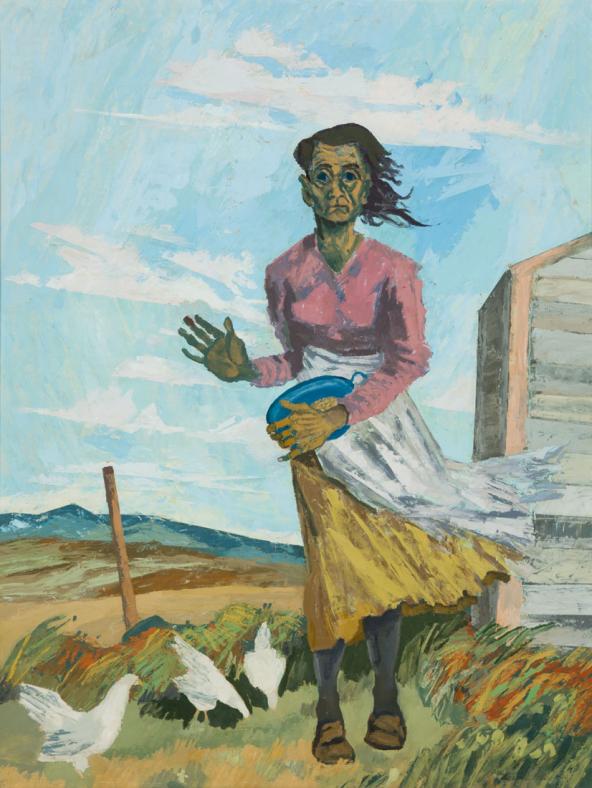
Prairie Woman, 1947
oil on paper, 26" x 19.75”
Prairie Woman is a powerful example of Bates’s empathetic exploration of the human condition. The enigmatic woman confronts the viewer with her unwavering gaze, raising her gnarled hand as she feeds the chickens at her feet. Toughened by the harshness of living on the prairie, she embodies the strength and resilience required to survive in this landscape.
Biographer Kathleen Snow remarked that Prairie Woman reflects the “intensity of the shock Max experienced on his return to the expanse of the prairies” after enduring five years as a prisoner of war in Germany. Bates found the bright and arid prairie an unforgiving environment, and in Prairie Woman, he observes the toll prairie life takes on the form and spirit of its inhabitants.
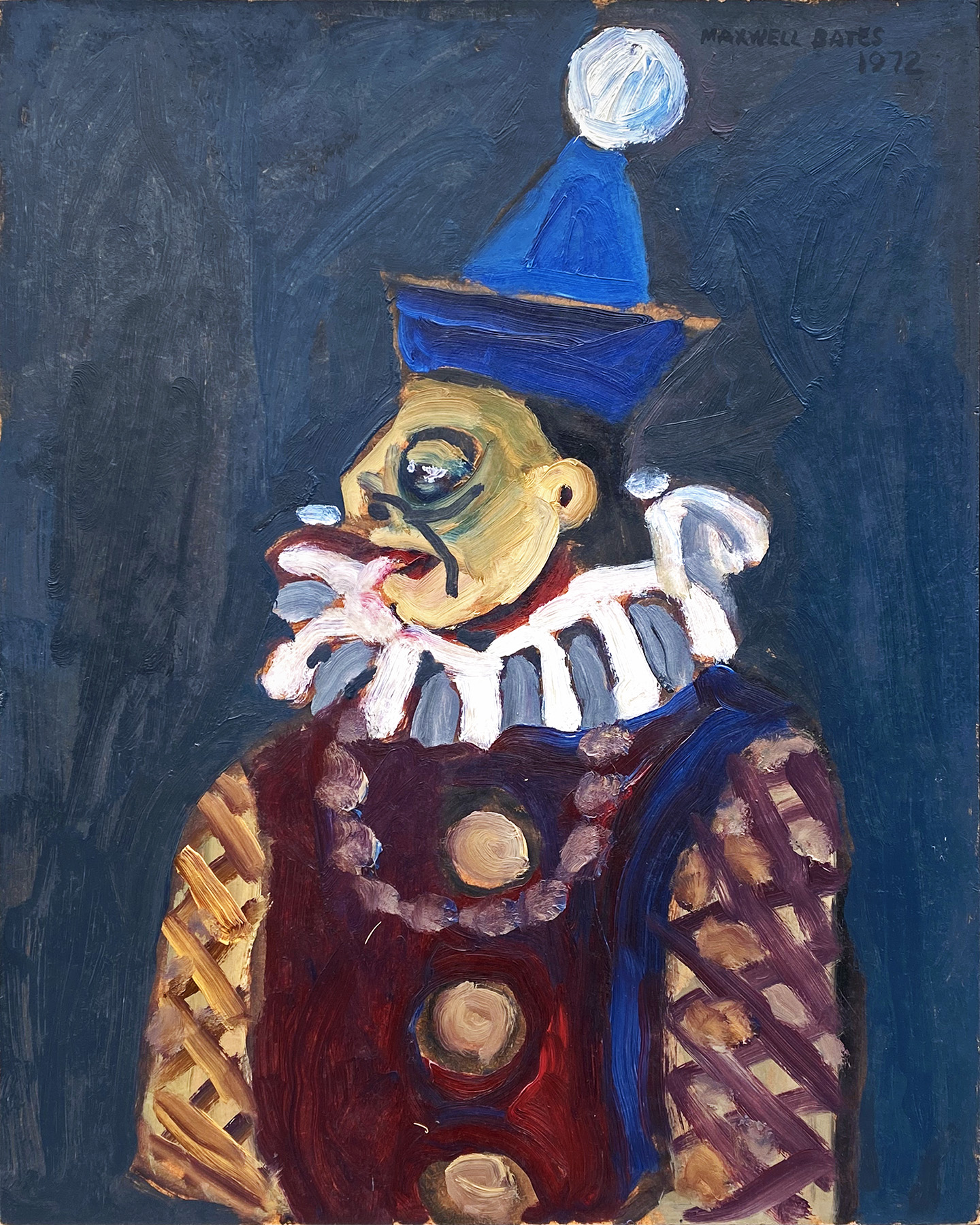
Portrait of Clown with Blue Hat, 1972
oil on masonite, 20" x 16”
Despite suffering a stroke in 1961, Bates continued to paint prolifically. He moved from Calgary to Victoria in 1962 and produced some of his most distinctive work over the next several years. His paintings have been exhibited across Canada, including at the National Gallery of Canada, the Winnipeg Art Gallery and the Vancouver Art Gallery, and continue to resonate for their raw, uncompromising vision of human experience.
Though long under appreciated in Canada, Bates received an honorary doctorate from the University of Calgary in 1971 and was named a Member of the Order of Canada in 1980, just months before his death. Bates had suffered a second stroke in 1978 and died in Victoria on September 14, 1980.
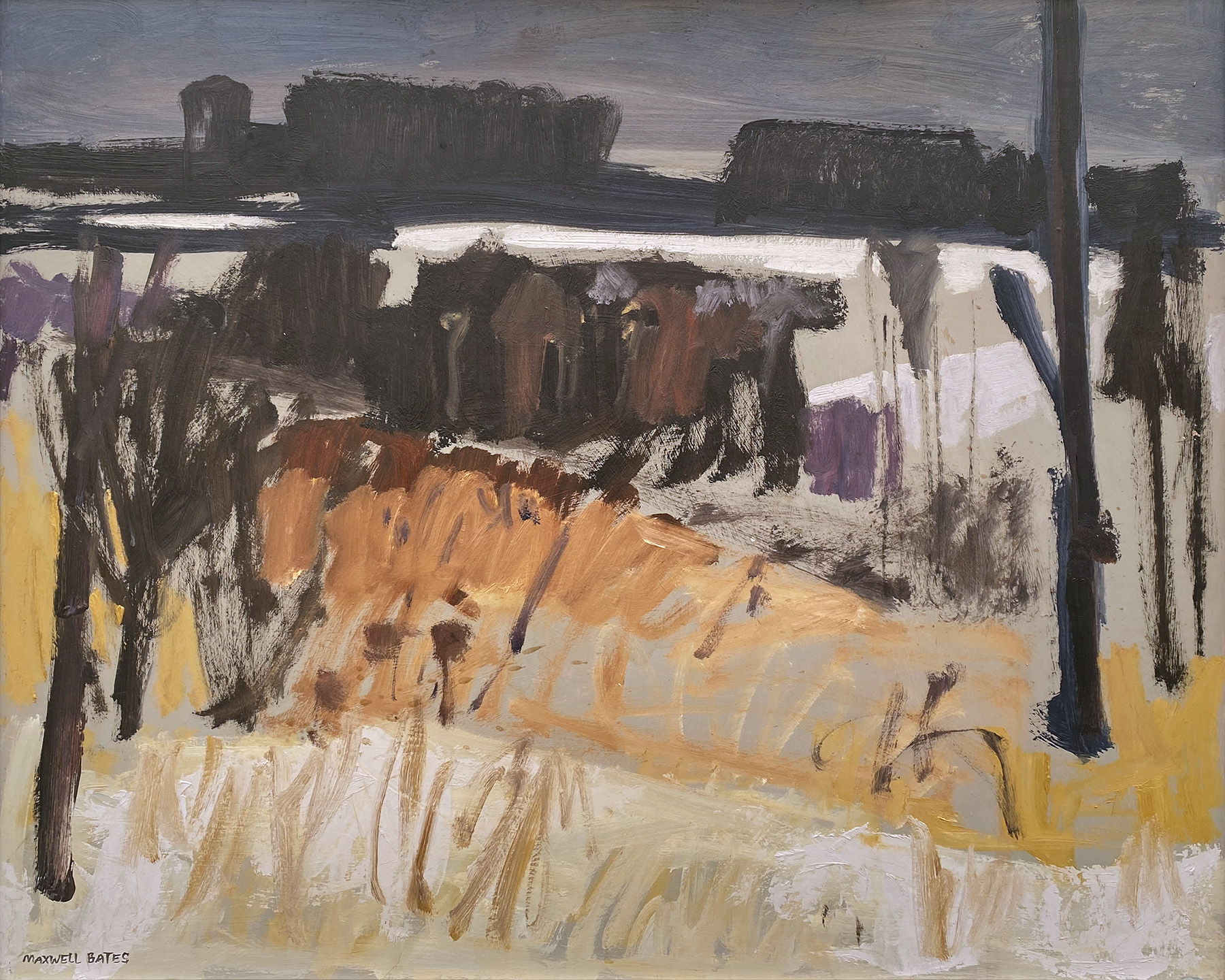
River in Winter, circa 1960
oil on board, 24” x 30”



